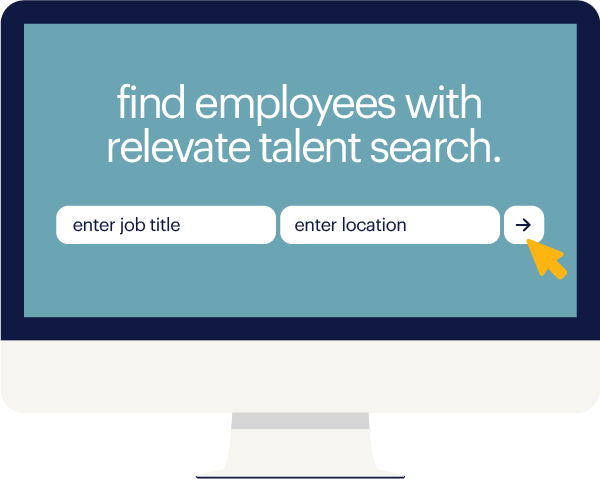1. don't sell them a job — attract them with an opportunity
Because you don't have oceans of time available to speak to candidates about the roles you're hiring for, you need to make every conversation count — which means changing the way you pitch the position to them. Rather than reaching out to them just to discuss the duties and responsibilities of the role, you'll need to attract them by persuasively marketing this move as not just a job, but a stellar career opportunity.
How can you do that? By learning more about where the candidate is in their career and what they're not getting from their current employer. That way you can begin to market the ways your company can fulfill those desires and goals — whether it's an accelerated path to advancement, increased impact within the company or a better work-life balance. Bottom line: What would make your company a rewarding employer of choice for them right now?
 rather than pitching a job, highlight the ways your company can upgrade the candidate's career and quality of life.
rather than pitching a job, highlight the ways your company can upgrade the candidate's career and quality of life.
And if you're looking to tap into millennial talent, it's important to know what this dominant workforce demographic wants from their employers. Eighty percent of millennials want to work for an organization with a positive workplace, and 87 percent say training and development opportunities are vital, so when talking to these candidates, hit upon the ways your company values a positive internal culture, continuous education and employee development.
2. upgrade your job descriptions to reflect a positive employer brand
Don't expect much interest from passive candidates if the job description you send them is a long list of duties written in dry, robotic language. Today's workforce wants to find meaning in their work, so you'll be able to get more interest by speaking to the human aspects of the role and your company's EVP (employer value proposition).
Given that 66 percent of today's workforce sees a strong benefits and perks package as the most important factor when considering a job offer, you'll also go far with passive candidates by trumpeting the benefits and perks that set you apart from other companies — whether it's flexible work hours, opportunities for telecommuting, competitive compensation and benefits packages or your organization's social impact.
 of today's workforce sees benefits and perks as the most important factors when considering a job offer.
of today's workforce sees benefits and perks as the most important factors when considering a job offer.
While writing a strong job description doesn't mean putting pen to paper like Toni Morrison or Ernest Hemingway, it can also help greatly to outsource the writing to an external consultant — especially if you have a number of positions to hire for right now. But if you're up to the challenge and want to keep it in-house, head on over to our comprehensive guide to writing highly effective job descriptions for additional tips and insights.
3. foster a "recruiting culture" with your current employees
When you're acting as an HR department of one, you just don't have enough time to conduct keyword searches on LinkedIn, attend networking or industry events or comb through hundreds of resumes. But while you don't have a team of recruiters to help, you do have a support system in place to help you cover more ground in the search for the ideal candidates: Your current workforce.
No one can sell the positive aspects of your company's EVP quite like your current employees. In fact, 46 percent of candidates want to learn about your business and culture directly from your employees, and 78 percent of recruiters say they find their top candidates through employee referrals.
 recruiters say they find their top candidates through employee referrals.
recruiters say they find their top candidates through employee referrals.
If you (or the executives you need to get buy-in from) need further convincing, consider these stats:
4. build ongoing relationships with candidates in your pipeline
When you're flying solo, you can't afford to start each new search from scratch — and there's no reason to, if you take the time to properly maintain a pipeline of talent.
Sometimes, you'll find a passive candidate who's an amazing fit, but they're just not ready to switch jobs at the moment. Or, someone who applied to an open role really wowed the hiring manager, but the job was offered to another strong competitor with slightly more experience. Regardless of how they initially came your way, be sure these candidates stay on your radar, and keep the lines of communication open to keep them interested in working for your company.
Here's how to do just that:
- Maintain a database of candidates who weren't hired but would make a great fit for roles that may open up in the future.
- Identify and make note of the traits — specific skill sets, qualifications, experiences — that made each candidate stand out, so you can easily search for them when the time is right.
- Connect with candidates on LinkedIn so you stay in the know every time they start a new position or gain a new license or certification.
- Reach out to them every few months to check in on where they are in their career and what they're looking for next.
While the steps above may seem time-consuming, taking the time to build and nurture your talent pipeline will save you countless hours down the road.
5. work with a staffing agency
When you're flying solo at your small business, without the time and resources available to tackle every challenge on your own, alleviate some of your burden by partnering with a staffing firm.
What are the benefits you can expect from forging this partnership?
- You'll gain access to their nationwide pools of quality, vetted talent.
- Working with a staffing agency with extensive knowledge of your industry and its hiring trends will ensure you're matched with the best-fit candidate.
- Because you won't have to spend time scouring through hundreds of resumes, you can focus on other top priorities for your business.
- Staffing experts are motivated to find quality candidates quickly, which means your time to hire will substantially decrease.
- Since it's their job to understand your specific business and its hiring needs, you can rest assured that their candidates will be the ideal fit for your company — not someone else's.
But before you make such a large investment, it's smart to get an idea of how you can size up the staffing firms available to you. To separate the wheat from the chaff, here are five essential questions to ask when starting a conversation.
Want to learn more about how to strengthen your hiring game? Head on over to the Randstad Learning Center to read about ways to take your talent acquisition strategy to the next level and gain additional insights into making a great hire every time.









